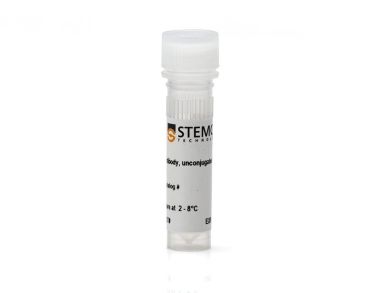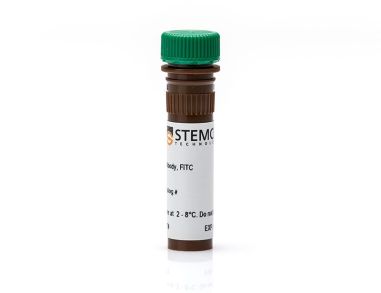搜索结果: 'methocult media formulations for mouse hematopoietic cells serum containing'
-
 抗人CD19抗体,clone HIB19 抗人、黑猩猩CD19的小鼠Monoclonal IgG1抗体
抗人CD19抗体,clone HIB19 抗人、黑猩猩CD19的小鼠Monoclonal IgG1抗体 -
 抗人CD20抗体,clone 2H7 小鼠Monoclonal IgG2b抗体,抗人、恒河猴、食蟹猴CD20
抗人CD20抗体,clone 2H7 小鼠Monoclonal IgG2b抗体,抗人、恒河猴、食蟹猴CD20 -
 抗人CD22抗体,clone HIB22 小鼠Monoclonal IgG1抗体,抗人、黑猩猩CD22
抗人CD22抗体,clone HIB22 小鼠Monoclonal IgG1抗体,抗人、黑猩猩CD22 -
 抗人CD235a(Glycophorin A)抗体,克隆 2B7 抗人CD235a(糖蛋白A)的小鼠Monoclonal IgG1抗体
抗人CD235a(Glycophorin A)抗体,克隆 2B7 抗人CD235a(糖蛋白A)的小鼠Monoclonal IgG1抗体 -
 抗人CD235(血型糖蛋白A/B)抗体,clone HIR2 小鼠Monoclonal IgG2b抗体,抗人糖蛋白A/B
抗人CD235(血型糖蛋白A/B)抗体,clone HIR2 小鼠Monoclonal IgG2b抗体,抗人糖蛋白A/B -
 抗人CD24抗体,clone 32D12 小鼠Monoclonal IgG1抗体,抗人CD24
抗人CD24抗体,clone 32D12 小鼠Monoclonal IgG1抗体,抗人CD24 -
 抗人CD25抗体,clone 2A3 小鼠Monoclonal IgG1抗体,抗人、食蟹猴CD25
抗人CD25抗体,clone 2A3 小鼠Monoclonal IgG1抗体,抗人、食蟹猴CD25 -
 抗人CD25抗体,clone BC96 抗人、恒河猴、食蟹猴CD25的小鼠Monoclonal IgG1抗体
抗人CD25抗体,clone BC96 抗人、恒河猴、食蟹猴CD25的小鼠Monoclonal IgG1抗体 -
 抗人CD298抗体,clone LNH-94 小鼠Monoclonal IgG1抗体,抗人CD298
抗人CD298抗体,clone LNH-94 小鼠Monoclonal IgG1抗体,抗人CD298 -
 抗人CD3抗体,clone OKT3,FITC 抗人CD3的小鼠Monoclonal IgG2a抗体
抗人CD3抗体,clone OKT3,FITC 抗人CD3的小鼠Monoclonal IgG2a抗体 -
 抗人CD3抗体,clone UCHT1 小鼠(BALB/c)Monoclonal IgG1抗体,抗人、黑猩猩CD3
抗人CD3抗体,clone UCHT1 小鼠(BALB/c)Monoclonal IgG1抗体,抗人、黑猩猩CD3


 EasySep™小鼠TIL(CD45)正选试剂盒
EasySep™小鼠TIL(CD45)正选试剂盒






 沪公网安备31010102008431号
沪公网安备31010102008431号